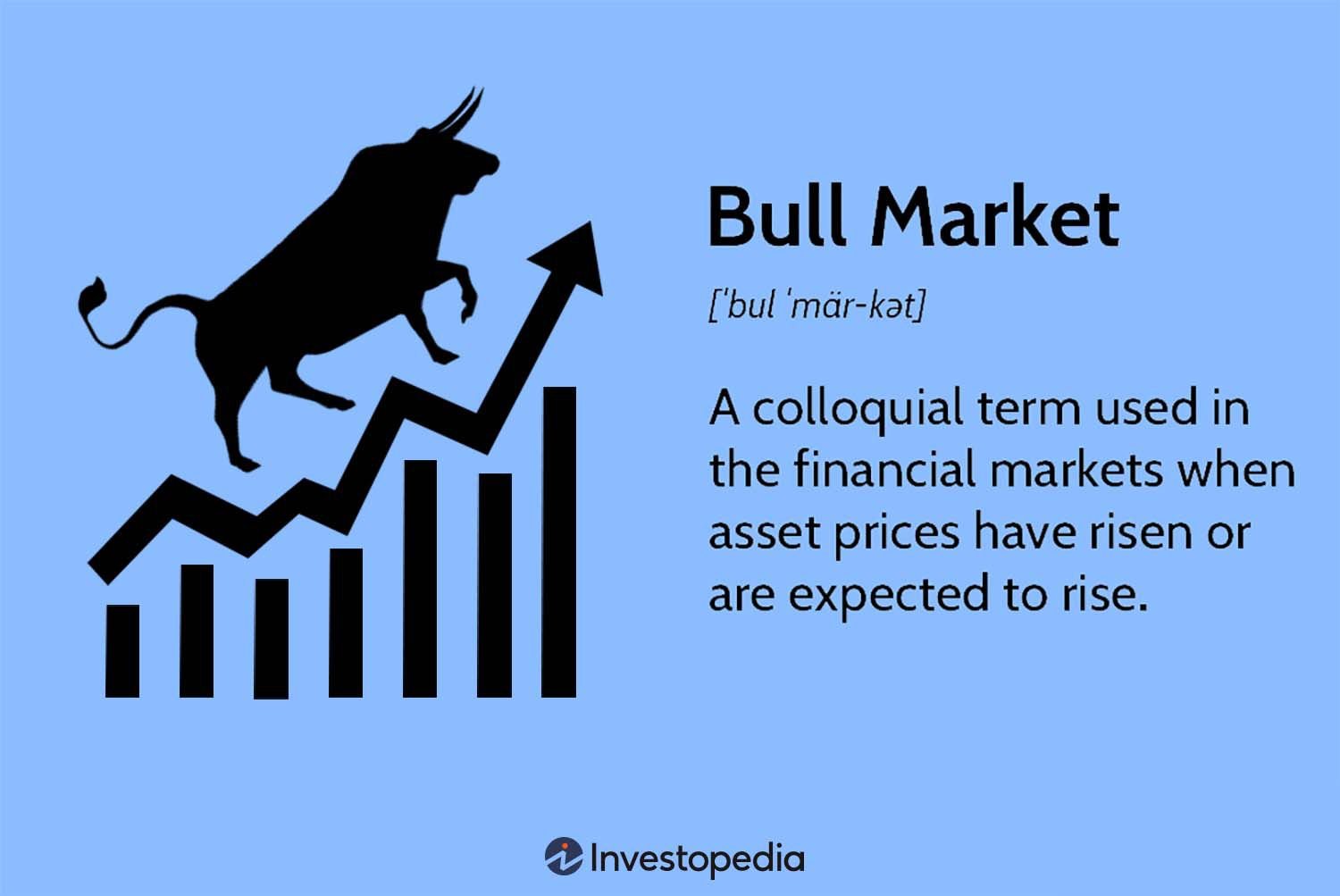Looking to understand what a bull market is and how to benefit from it? You’re in the right place! In this article, we’ll dive into the fascinating world of bull markets, exploring what they are and how you can take advantage of their positive momentum. Whether you’re a seasoned investor or just starting out, understanding bull markets is crucial for maximizing your potential gains. So, let’s get started and uncover the secrets behind what is a bull market and how to benefit from it.
What is a Bull Market and How to Benefit From It
Introduction
In the world of investing, understanding market trends is essential for success. One such trend is a bull market, characterized by rising stock prices and an optimistic investor sentiment. This article aims to provide a comprehensive guide to bull markets, explaining what they are and how investors can benefit from them. By the end, you will have a clear understanding of how to navigate and take advantage of these profitable market conditions.
Understanding a Bull Market
A bull market refers to a sustained period in the financial markets when stock prices are rising, usually accompanied by strong economic growth and positive investor sentiment. During a bull market, market participants are confident about the future, leading to increased buying activity. As a result, demand for stocks and other assets increases, driving prices higher.
Characteristics of a Bull Market
Bull markets are characterized by several key features that set them apart from other market conditions:
– Rising Stock Prices: The most obvious characteristic of a bull market is the consistent upward movement of stock prices over an extended period. This upward trend can last for months or even years.
– Strong Investor Confidence: Bull markets thrive on positive investor sentiment. During a bull market, investors have confidence in the economy, corporate earnings, and the overall direction of the market. Optimism is contagious, leading to increased buying activity.
– Increased Trading Volume: A bull market is often accompanied by higher trading volumes as more investors participate in the market. This increased liquidity can create a positive feedback loop, driving prices even higher.
– Multiple Sectors Show Strength: In a robust bull market, multiple sectors of the economy experience growth simultaneously. It is not limited to a single industry or company. This broad-based growth indicates a healthy and sustainable trend.
How to Identify a Bull Market
Identifying a bull market can be crucial for investors looking to profit from the upward market conditions. Here are some indicators that can help you recognize a bull market:
1. Market Index Performance
Monitoring the performance of market indices, such as the S&P 500 or Dow Jones Industrial Average, is an effective way to gauge the overall market sentiment. If these indices consistently show an upward trend, it is likely that a bull market is underway.
2. Earnings Growth
Positive earnings growth across multiple companies and sectors is a strong indication of a bullish market. Companies reporting better-than-expected earnings and optimistic future guidance often contribute to the upward momentum in stock prices.
3. Economic Indicators
A thriving economy characterized by low unemployment, increasing consumer spending, and robust GDP growth is supportive of a bull market. These economic indicators point to favorable market conditions and increased corporate profitability.
4. Investor Sentiment Surveys
Monitoring investor sentiment surveys can provide valuable insights into market trends. Bullish sentiment, expressed by a majority of investors, reflects their optimism about the market’s future direction.
5. Technical Analysis
Technical analysis involves studying historical price patterns and indicators to predict future market movements. Bullish technical indicators include higher highs, higher lows, and upward price trends.
Strategies to Benefit From a Bull Market
When the market is experiencing a bull run, investors have opportunities to maximize their returns. Here are some strategies to consider:
1. Buy and Hold
The buy and hold strategy involves purchasing stocks or other securities with the intention of holding them for an extended period, regardless of short-term market fluctuations. In a bull market, this strategy can yield significant returns as stock prices generally rise over time.
2. Diversify Your Portfolio
Diversifying your investment portfolio across different asset classes, sectors, and geographic regions can help mitigate risks during a bull market. By spreading your investments, you reduce the impact of any single investment’s performance on your overall portfolio.
3. Invest in Growth Stocks
In a bull market, growth stocks tend to outperform other types of stocks. These companies are characterized by their high earnings growth potential and may reinvest their profits to fuel further expansion. Identifying promising growth stocks through thorough research can lead to substantial gains.
4. Use Trailing Stop-Loss Orders
Trailing stop-loss orders can help protect your profits during a bull market. By setting a stop-loss order slightly below the current market price, you can automatically sell your investment if the price drops by a predetermined percentage. This strategy locks in gains while allowing for further upside potential.
5. Consider Exchange-Traded Funds (ETFs)
ETFs offer a convenient way to gain exposure to a diversified portfolio of stocks or other assets. During a bull market, ETFs focused on specific sectors or market indices can provide broad-based exposure to the upward trend.
6. Regularly Review Your Investments
A bull market can create an environment where stock prices might become overvalued. Regularly reviewing and reassessing your investments can help identify potential risks and take timely actions to protect your gains.
A bull market presents investors with an opportunity to grow their wealth through strategic investment decisions. By understanding the characteristics of a bull market and utilizing appropriate investment strategies, you can position yourself to benefit from the upward market trends. Remember to stay informed, diversify your portfolio, and regularly review and adjust your investments to maximize your potential returns.
What Is a Bull Market, and How Can Investors Benefit From One?
Frequently Asked Questions
Frequently Asked Questions (FAQs)
What is a bull market?
A bull market refers to a financial market characterized by rising prices and optimism among investors. It typically indicates a sustained upward trend in stock prices, often accompanied by increased buying activity.
How can one benefit from a bull market?
Investors can benefit from a bull market in several ways:
What are the common strategies to benefit from a bull market?
Some common strategies to benefit from a bull market include:
Should I invest more during a bull market?
While a bull market can present lucrative investment opportunities, it is important to approach it with caution and consider factors such as your risk tolerance and investment goals before investing more.
Are there any risks associated with investing in a bull market?
Although a bull market often brings positive returns, there are still risks involved, such as:
How can I identify if the market is in a bull phase?
Identifying a bull market can be done through various indicators and factors, such as:
What sectors or industries tend to perform well in a bull market?
Certain sectors or industries tend to perform well during a bull market due to increased consumer confidence and economic growth. These may include:
Is it possible to predict the duration of a bull market?
Predicting the exact duration of a bull market is challenging, as it depends on numerous factors such as economic conditions, market sentiment, and unexpected events. However, market analysts use various methods and indicators to make informed predictions.
Final Thoughts
A bull market refers to a period of rising stock prices and optimism in the market. To benefit from it, investors can consider several strategies. Firstly, they can buy stocks of companies they believe will thrive during the bullish period. Secondly, investors can diversify their portfolio to spread the risk and capitalize on opportunities in different sectors. Thirdly, they can use techniques like dollar-cost averaging to consistently invest over time, taking advantage of market fluctuations. Additionally, staying informed, conducting thorough research, and seeking guidance from financial advisors can enhance one’s chances of benefiting from a bull market.


